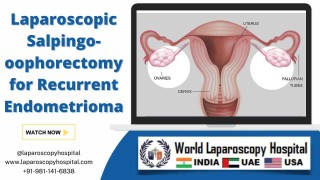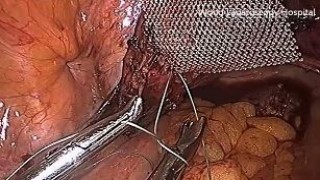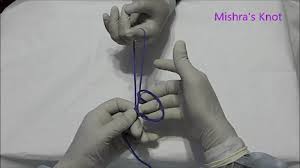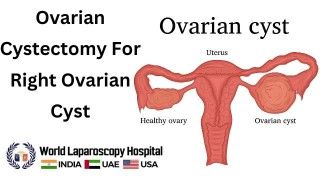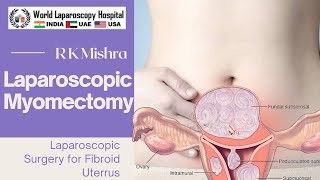Advancing Surgical Precision: Embracing Robotic Myomectomy for Enhanced Patient Care
Add to
Share
1,382 views
Report
2 years ago
Description
Gynecological surgery, the advent of robotic myomectomy has revolutionized the treatment of uterine fibroids, offering advanced surgical precision and enhanced patient care. Uterine fibroids, benign tumors that develop in the uterus, can cause a range of symptoms including pelvic pain, heavy menstrual bleeding, and reproductive issues. Robotic myomectomy combines the latest advancements in robotics and minimally invasive techniques, empowering surgeons to achieve optimal outcomes while prioritizing patient well-being. Robotic myomectomy begins with the patient under general anesthesia, ensuring comfort and safety throughout the procedure. The surgeon operates using a robotic surgical system, which consists of robotic arms equipped with miniaturized surgical instruments and a high-definition camera. These instruments are inserted through small incisions in the abdomen, allowing the surgeon to access the uterus with precision. The robotic system offers several advantages over traditional open surgery. The surgeon sits at a console, controlling the robotic arms with utmost precision and dexterity. The system provides a three-dimensional, magnified view of the surgical site, allowing for detailed visualization of the fibroids and surrounding tissues. This enhanced visualization enables the surgeon to precisely plan and execute the removal of the fibroids while preserving the healthy uterine tissue. The robotic instruments mimic the movements of the surgeon's hands, translating their motions into precise and scaled movements within the patient's body. This level of precision allows for meticulous dissection and removal of the fibroids, minimizing damage to surrounding structures and reducing the risk of complications. The surgeon's control over the robotic system, coupled with the improved visualization, ensures a higher degree of surgical accuracy compared to traditional approaches. One of the key advantages of robotic myomectomy is its minimally invasive nature. The small incisions result in reduced post-operative pain, minimal scarring, and faster recovery times compared to open surgery. Patients typically experience less blood loss, reduced risk of infection, and shorter hospital stays. Additionally, the robotic approach offers a faster return to daily activities, allowing women to resume their normal routines more quickly. The personalized nature of robotic myomectomy allows surgeons to tailor the procedure to each patient's unique needs. The surgical system's flexibility and precision enable the removal of fibroids of varying sizes and locations. This customized approach ensures that the surgical intervention aligns with the patient's specific condition, promoting the best possible outcomes. Moreover, robotic myomectomy offers potential benefits for women who wish to preserve their fertility. By selectively removing fibroids while preserving the healthy uterine tissue, this technique can help maintain the integrity of the uterus, increasing the chances of successful future pregnancies. It is worth noting that robotic myomectomy requires a highly skilled surgical team trained in robotic-assisted procedures. Surgeons undergo specialized training to become proficient in operating the robotic system, ensuring the utmost safety and efficiency during the procedure. Robotic myomectomy represents a groundbreaking advancement in the field of gynecological surgery, harnessing the power of robotics to deliver unparalleled precision and patient care. Uterine fibroids, non-cancerous growths that develop in the uterus, can cause a range of symptoms and complications for women. Robotic myomectomy offers a state-of-the-art approach to fibroid removal, combining the latest technological advancements with minimally invasive techniques. During a robotic myomectomy procedure, the patient is placed under general anesthesia to ensure comfort and safety. The surgeon utilizes a robotic surgical system, consisting of robotic arms equipped with specialized instruments and a high-definition camera. These instruments are inserted through small incisions in the abdomen, granting the surgeon precise access to the uterus. The robotic system provides several notable advantages over traditional open surgery. The surgeon operates from a console, controlling the robotic arms with exceptional precision and maneuverability. The system delivers a three-dimensional, magnified view of the surgical site, enabling the surgeon to visualize the fibroids and surrounding tissues with remarkable clarity. This heightened visualization aids in meticulous planning and execution of the fibroid removal, while preserving the integrity of the healthy uterine tissue. The robotic instruments replicate the surgeon's movements with incredible accuracy, translating their actions into precise and scaled motions within the patient's body. This level of precision allows for meticulous dissection and removal of the fibroids, minimizing the risk of damage to surrounding structures and optimizing patient outcomes. The surgeon's control over the robotic system, combined with enhanced visualization, ensures unparalleled surgical accuracy compared to traditional methods.
Similar Videos

